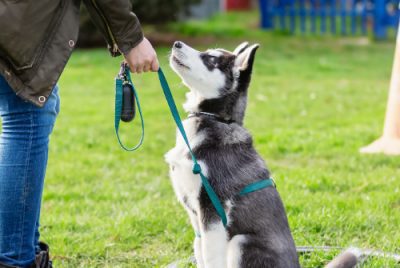Ultimate Guide: 10 Things Responsible Dog Parents Do
Post Disclaimer
We may earn a commission for purchases made using our links. Please see our Disclaimer to learn more.
Essential Tips: 10 Things Responsible Dog Parents Do
Key Highlights
- Being a responsible dog parent means prioritizing your furry friend’s health and well-being, ensuring they receive regular veterinary check-ups, and investing in quality nutrition.
- It is important to provide daily exercise and mental stimulation to keep your dog active and prevent excess energy from causing behavioral issues.
- Socialization is crucial for dogs to develop good manners and feel comfortable in public places, especially for new puppies.
- Maintaining grooming and hygiene practices, such as regular brushing and dental care, is essential for your dog’s overall health.
- Creating a safe and comfortable living environment for your dog, including crate training and home safety measures, is key to their well-being.
- Embracing positive training techniques and providing love and attention are essential for fostering good behavior and building a strong bond with your dog.
- Being prepared for emergencies by having a vet contact, an emergency plan, and pet insurance is crucial for your dog’s well-being.
- Promoting responsible pet ownership within your community is important for the welfare of all dogs and ensuring a positive dog-owner relationship.
Introduction
Congratulations on becoming a dog parent! It’s an exciting and fulfilling experience that comes with great responsibility. As a responsible pet owner, you must meet your dog’s physical and emotional needs. In honor of National Responsible Pet Owners Month this February, we’ll discuss the 10 essential actions every dog parent should take for their furry friend’s well-being. From regular vet check-ups to creating a safe living environment, these actions will help you provide a healthy and enriching life for your canine companion.
Essential Actions for Every Responsible Dog Parent
Responsible dog ownership goes beyond food and shelter. It involves prioritizing your dog’s well-being through regular veterinary care, quality nutrition, exercise, socialization, grooming, a safe living environment, positive training, love and attention, emergency readiness, and promoting responsible pet ownership in the community.
1. Prioritize Regular Veterinary Check-Ups
Regular vet check-ups are important for your dog’s health. Dogs need preventive care and early problem detection. You ensure updated vaccinations, good dental care, and early issue resolution by seeing the vet routinely. Vets offer nutrition, exercise, and behavior advice tailored to your dog. These check-ups maintain health and foster a bond between you, your dog, and the vet. It is also crucial to prioritize protecting your dog against pests such as fleas, ticks, and heartworm, as these can greatly impact your dog’s health and well-being.
2. Invest in Quality Nutrition
Proper nutrition is vital for your dog’s health. After consulting with your vet, invest in high-quality food tailored to your dog’s needs. Consider factors like age, activity level, and health conditions. Supplements like omega-3 fatty acids can support joint health and immunity, promoting longevity and vitality.

3. Ensure Daily Exercise and Mental Stimulation
Regular exercise and mental stimulation are crucial for your dog’s physical and mental well-being. Dogs are naturally active animals and need daily exercise to maintain a healthy weight, prevent obesity-related health issues, and release excess energy. Depending on your dog’s breed, age, and health condition, their exercise needs may vary. Here are some activities that can provide both physical and mental stimulation for your furry friend, including plenty of mental stimulation to keep them happy and healthy:
- Daily walks or runs
- Interactive toys and puzzles
- Obedience training sessions
- Playdates with other dogs
- Agility courses or obstacle courses
- Swims or trips to the beach
- Games like fetch or hide-and-seek
Providing your dog with plenty of exercise and mental stimulation will keep them physically healthy, prevent boredom, and promote good behavior.
4. Practice Ongoing Socialization
Socializing your dog is key to responsible ownership. Expose them to various people, animals, and places early on. This helps them learn manners, socialize with others, and feel at ease in different situations. Early socialization, based on the age and temperament of the dog, is crucial for preventing future behavioral issues. Puppies, for example, must be gently introduced to new people and other animals and taught how to be alone. Take your dog to parks and public areas, introducing them to new experiences for a well-rounded companion.
5. Maintain Grooming and Hygiene
Proper grooming and hygiene practices are essential for your dog’s health and well-being. Regular grooming keeps your dog looking good and helps prevent skin infections, matting, and other hygiene-related issues. Brushing your dog’s coat regularly helps remove loose hair and prevents matting. Additionally, regular dental care, including brushing your dog’s teeth, is crucial for their oral health. Brushing your dog’s teeth is often overlooked but hugely important to their overall health, as well as avoiding expensive dental treatments in the future. Make this a part of their normal routine, and make sure to use toothpaste made specifically for dogs. With a little bit of time and training, teeth brushing can be a fun activity for your pet every day! Paying attention to your dog’s grooming and hygiene needs will ensure they are comfortable, healthy, and free from discomfort or infections.
6. Secure a Safe and Comfortable Living Environment
Creating a safe and comfortable living environment is vital for your dog’s well-being. Your home should be a place where your dog feels safe, secure, and comfortable. Some key considerations for a dog-friendly living environment include:
- Providing a comfortable bed or crate where your dog can rest and feel secure.
- Ensuring your home is free from hazards and toxic substances that could harm your dog.
- Installing safety gates or using crates to restrict access to certain areas of the house.
- Keep electrical cords, toxic plants, and small objects out of your dog’s reach.
- Providing access to fresh water and a designated area for toileting.
- Creating a quiet and calm space where your dog can retreat to when they need some alone time.
Creating a safe and comfortable living environment promotes your dog’s well-being and ensures that it has a peaceful and secure place to call home.
7. Embrace Positive Training Techniques
Positive training methods are the best and kindest way to teach your dog good behavior. You reward good actions, like sitting, with treats or praise. This method focuses on encouraging good behavior instead of punishing bad behavior. It strengthens the bond between you and your dog, making them more willing to learn. Positive training involves using treats, toys, and praise to reinforce desired behaviors, such as using their paw to shake or high-five. It also means having clear rules and boundaries while avoiding punishment or harsh methods. By using positive training, you can teach your dog obedience, manners, and proper behavior.
8. Provide Love and Attention
Being a dog parent means giving love and attention to your furry friend. Dogs need human companionship, affection, and playtime. Spend quality time cuddling, playing, or walking with your dog. Involve them in family activities to make them feel valued. Dogs need mental stimulation and love to avoid boredom and anxiety. Showering your dog with love and attention strengthens your bond and brings happiness. Make sure they’re spending plenty of time inside with you and your family, giving them attention and treats and playing games with them.
9. Prepare for Emergencies
As a caring dog owner, planning for unexpected situations is vital. Include vet and emergency clinic contacts in your plan. Learn basic dog first aid and keep a first aid kit. Think about pet insurance for vet expenses. Prepare for evacuations and have a safe spot during emergencies. Ensure your dog always wears an ID tag with your name, address, and phone number, which can help protect your pet in emergencies. Being ready helps protect your dog’s health and safety.
10. Promote Responsible Pet Ownership
Promote responsible pet ownership in your community by being a role model, educating others, and advocating for adoption from shelters or reputable breeders. Support spaying/neutering, discourage unethical breeding, and maintain proper pet etiquette in public places. Your efforts contribute to a community that values the well-being of all dogs.
Conclusion
Responsible dog parenting is a commitment to your furry companion’s well-being. Every action contributes to your pet’s happy and healthy life, from regular vet visits to quality nutrition and ample exercise. You build a strong bond based on trust and care by practicing positive training techniques and providing love and attention. Emergency preparedness and responsible ownership ensure your pet’s safety in times of need. Embrace these essential actions to nurture a loving and fulfilling relationship with your beloved four-legged friend.
Frequently Asked Questions
How Often Should I Take My Dog to the Vet?
Taking your dog to the vet at least once a year is recommended for regular check-ups and vaccinations. However, the frequency may vary depending on your dog’s age, health condition, and any specific needs or concerns. Consult with your veterinarian for a personalized veterinary care schedule for your furry friend.
What Should Be Included in My Dog’s Diet?
Your dog’s diet should consist of high-quality dog food that meets their nutritional needs. Consult with your veterinarian to determine the best diet for your dog based on their age, breed, and any specific health conditions. Supplements may be recommended for certain dogs with unique dietary needs.
How Much Exercise Does My Dog Need Daily?
The amount of exercise your dog needs daily depends on their breed, age, and health condition. However, most dogs benefit from at least 30 minutes to 1 hour of exercise daily. Active breeds may require more exercise, while older dogs may prefer shorter, low-impact activities. Regular exercise helps prevent obesity, promotes mental stimulation, and burns excess energy.
Why Is Socialization Important for Dogs?
Socialization is important for dogs to develop good manners, learn how to interact with other dogs and people, and feel comfortable in different situations. It helps prevent behavioral problems and promotes a well-rounded and confident canine companion. Socialization is especially crucial for new puppies to ensure they become well-adjusted and friendly dogs.
What Are the Best Grooming Practices for Dogs?
The best grooming practices for dogs include regular brushing to remove loose hair and prevent matting, regular baths using dog-specific shampoos, and nail trimming. Additionally, dental care is important for your dog’s oral health, and regular brushing of their teeth and providing dental treats can help maintain their dental hygiene. Consult with a professional groomer or veterinarian for specific grooming practices based on your dog’s breed and needs.
How Can I Ensure My Home Is Safe for My Dog?
To ensure your home is safe for your dog, remove any potential hazards, such as toxic plants, household chemicals, and small objects that could be swallowed. Secure cabinets and trash cans to prevent access to hazardous substances. Keep electrical cords and other potential dangers out of your dog’s reach. Install safety gates or use crates to restrict access to certain areas of the house. Creating a safe environment and eliminating potential hazards will help protect your dog from accidents and injuries.
Which Training Methods Are Considered Positive?
Positive training methods focus on rewarding desired behaviors and encouraging good behavior rather than punishing bad behavior. Rewards can include treats, praise, or play. Positive training emphasizes consistency, clear communication, and building a strong bond with your dog. It is considered the most effective and humane way to train and teach obedience.
How Can I Show My Dog Love and Attention?
Showing your dog love and attention can be done through quality time spent together, affectionate gestures such as petting and cuddling, and engaging in activities that your dog enjoys. Treat your dog as a valued family member, include them in your daily routines, and make them feel loved and cared for. Bonding with your dog through regular interactions and positive reinforcement will help create a strong and loving relationship.
What Should I Include in an Emergency Plan for My Dog?
An emergency plan for your dog should include important contact information for your veterinarian and the nearest emergency veterinary clinic. It should also include a first aid kit with basic supplies for treating minor injuries or illnesses. Consider potential evacuation scenarios and have a designated safe place for your dog. Pet insurance can also be included in your emergency plan to help cover unexpected veterinary costs.
Why Is Promoting Responsible Pet Ownership Important?
Promoting responsible pet ownership is important for all dogs’ welfare and communities’ overall well-being. Responsible pet ownership includes adopting from shelters or reputable breeders, advocating for spaying and neutering to control the pet population and educating others about the responsibilities of owning a dog. Promoting responsible pet ownership ensures that all dogs receive proper care, love, and respect.





